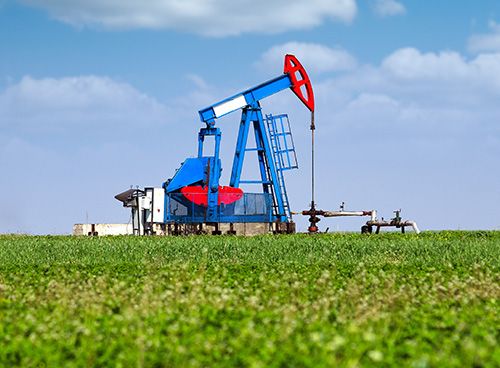How Last Mile Is Redefining Field Operations in Real Time
Introduction: Accountability Starts on Day One
Environmental responsibility doesn’t start when a well is plugged.
At Last Mile Production, it begins the moment a drill hits the ground.
For decades, the oil and gas industry has been reactive when it comes to emissions and environmental impact—addressing problems after production stops, after communities are affected, and after regulators step in.
We’re changing that.
At Last Mile, we don’t wait for a site to be retired to start restoring it.
Through real-time methane mitigation, AI-powered emissions tracking, and blockchain-based verification, we’re building a new model of energy responsibility—from the very beginning.
The Problem with Traditional Operations
The environmental impact of oil and gas production often comes from routine practices that go unaddressed:
- Methane venting and flaring during drilling
- Slow or incomplete restoration after a well’s productive life
- Delayed or inaccurate reporting on ESG metrics
These overlooked emissions are a significant contributor to global warming—especially methane, which is more than 80x more potent than CO₂ over a 20-year period.
Most operators view these issues as someone else’s problem. We view them as an opportunity for leadership.
The Last Mile Approach: Reengineering Responsibility
Last Mile Production isn’t just cleaning up the mess.
We’re reengineering the entire field lifecycle—in partnership with Pure Oil and Gas.
Together, we manage oil and gas operations with a level of environmental precision typically reserved for remediation work. But instead of plugging and abandoning first, we capture, mitigate, and optimize throughout production.
Here’s how we work:
- During active drilling, we monitor methane output with real-time data
- We capture and monetize natural gas that would otherwise be flared
- We adjust operations on the fly to reduce emissions at the source
- Once production ends, we seamlessly transition to site sealing, well retirement, and land restoration
This isn’t an afterthought.
It’s a proactive, tech-driven model of accountability, and it sets a new standard for responsible energy development.
Tech That Powers Real-Time Impact
At the heart of our approach is a powerful digital infrastructure that ensures every claim we make is backed by measurable proof:
Enovate AI
Our operational engine. Enovate aggregates data from the field in real time—identifying trends, alerting supervisors, and optimizing every drilling and remediation decision. It helps us cut emissions, avoid waste, and enhance safety with surgical precision.
Kuva Systems
Eyes in the sky. Kuva’s gas cloud imaging technology gives us a live visual on methane leaks and fugitive emissions. This isn’t guesswork—it’s infrared visibility that allows immediate response and long-term mitigation.
Blockchain for Energy
Every action we take—every ton of methane reduced, every acre restored—is logged on a secure, immutable blockchain ledger. This ensures total transparency and traceable carbon credit issuance that holds up to scrutiny and meets the standards of even the most cautious ESG buyers.
BluClarity
Verification with confidence. BluClarity provides insurance-backed climate outcomes, helping us turn emissions reduction into a de-risked, fiduciary-grade asset class for investors and buyers alike.
Together, these systems make Last Mile’s field operations verifiable, accountable, and market-ready.
Going Beyond the Plug
Where others might stop at sealing a well, we go further.
We restore sites to their natural state, monitor environmental indicators over time, and generate high-integrity carbon credits that go far beyond industry baselines.
On average, our projects exceed traditional regulatory well retirement requirements by up to 5X—proving that when done with discipline, even legacy assets can become climate solutions.
This process matters. Because in today’s marketplace, ESG claims without data are just promises. We deliver proof.
Building Climate Trust, One Site at a Time
Our operations span the Permian Basin, the Fort Worth Basin, and Wyoming’s historic oilfields—regions long known for their productivity, but now equally known for their environmental burdens.
At Last Mile, each location is a chance to demonstrate what’s possible when energy, technology, and stewardship come together.
- In Texas, we’re preventing flaring and issuing carbon credits while rigs are still producing.
- In Wyoming, we’re working in high-impact restoration zones—turning idle fields into climate assets.
- In every basin, we’re proving that responsibility and profitability are not mutually exclusive.
And it’s not just regulators who care—it’s communities, investors, and mission-driven buyers who demand verifiable environmental performance.
We’re not just meeting their expectations—we’re reshaping them.
Conclusion: This Is What Energy Accountability Looks Like
There is a quiet revolution happening in energy—and it’s happening beneath the noise.
It’s in the decisions we make at the drill pad.
It’s in the tech platforms we build to track our impact.
It’s in the legacy we create by doing the hard work up front.
At Last Mile Production, we believe environmental integrity starts from the very beginning. Not when the cameras arrive. Not when the wells dry up. But from the first foot of the first mile.
We’re walking that path—field by field, credit by credit, legacy by legacy.
Join the Future of Responsible Energy
See How We Operate
Explore Our Carbon Credit Impact
Partner With Us on the Last Mile

